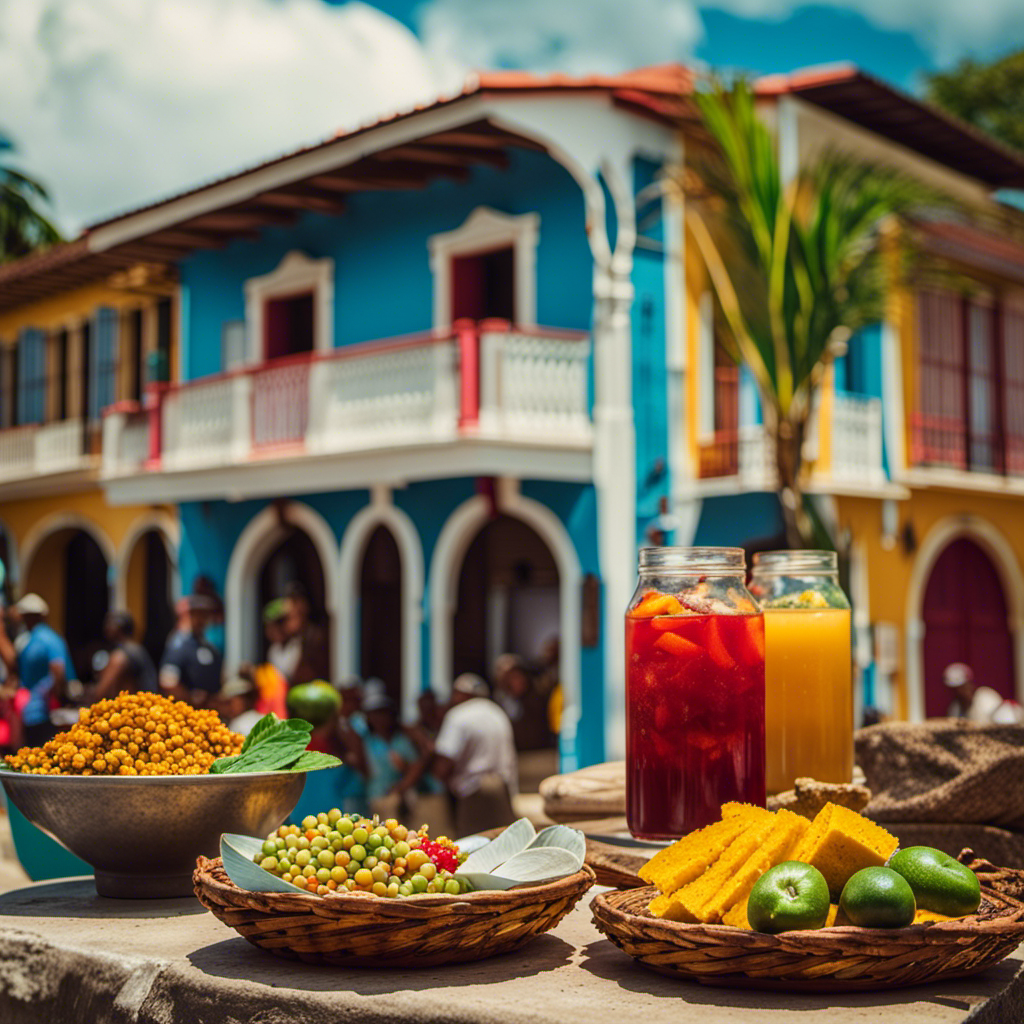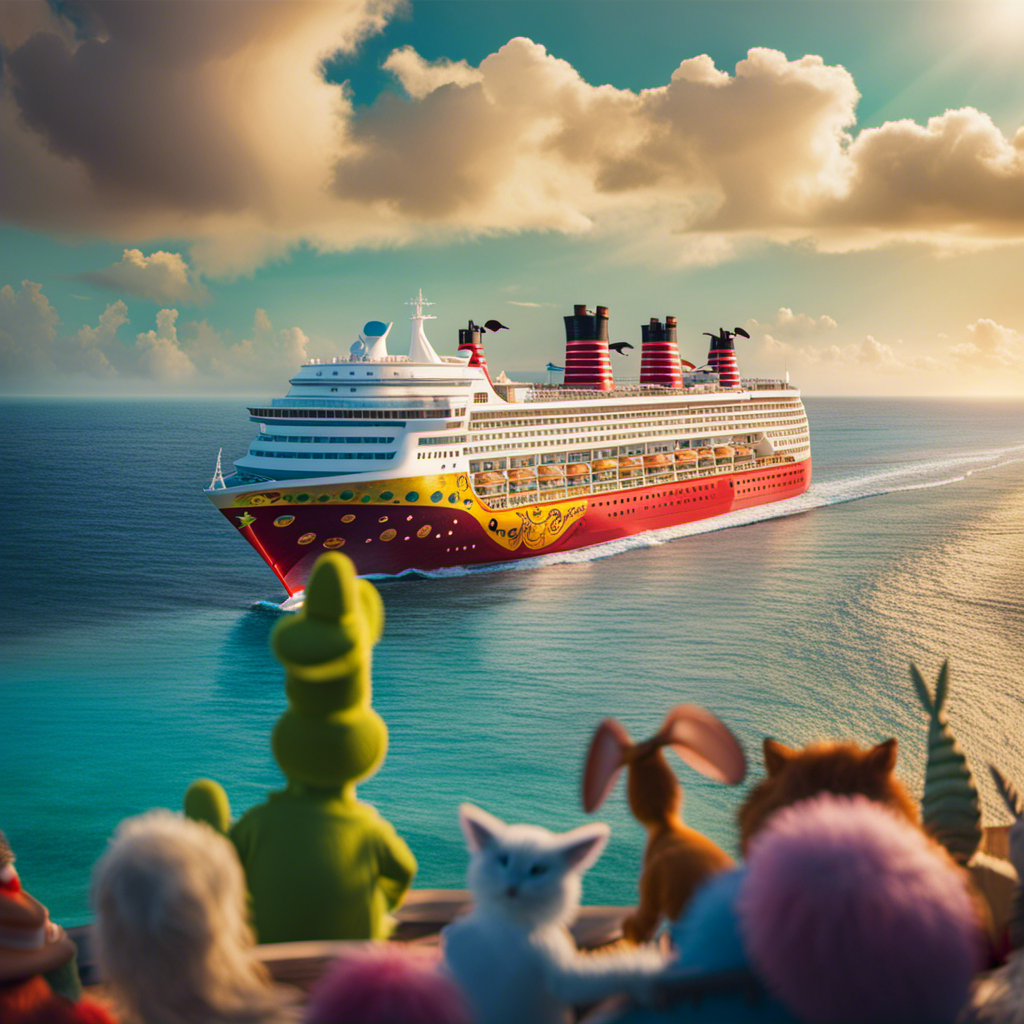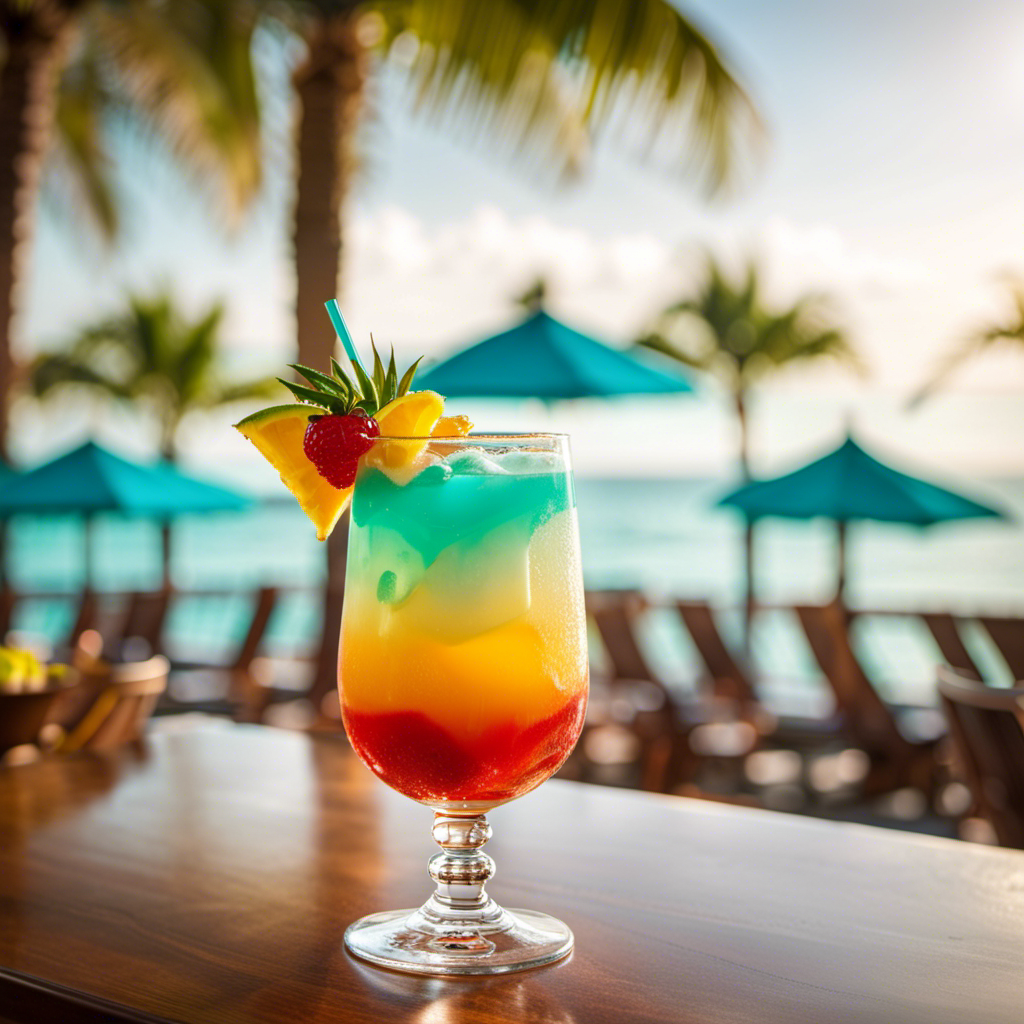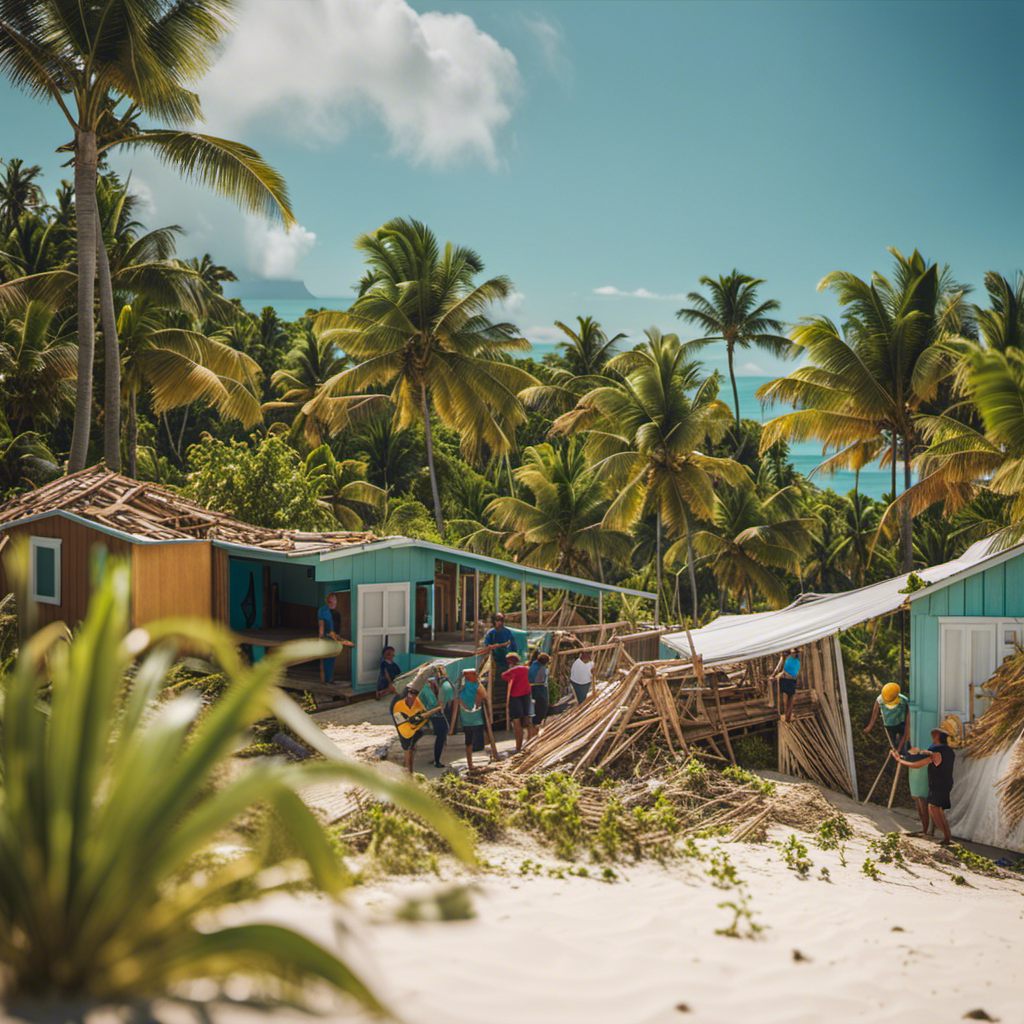Allow me to recount a fascinating tale concerning Hispaniola – a region overflowing with historical importance, laden with delicious food, and bursting with a diversity of cultures.
This Caribbean island holds the distinction of being the first European colony in the region, with Christopher Columbus making landfall here in 1492. From the Taino people to Spanish and French colonization, and the eventual independence of Haiti and the Dominican Republic, the journey of Hispaniola is a captivating tale.
So, join me as we dive into the vibrant flavors, diverse traditions, and captivating history of this extraordinary island.
Key Takeaways
- Hispaniola was the first European colony in the Caribbean, with Christopher Columbus landing there in 1492.
- The indigenous Taino people suffered greatly under colonization, facing forced labor, exploitation, and diseases brought by Europeans.
- Hispaniola’s cuisine is a fusion of flavors from Spain, France, and Africa, with Haitian and Dominican dishes showcasing this cultural fusion.
- The Taino people left a lasting impact on the cultural heritage of Hispaniola, with their influences seen in the cuisine and food culture of the island.
The History of Hispaniola’s Colonization
I learned that Hispaniola was first colonized by Europeans in the Caribbean, and Christopher Columbus landed there in 1492. The impact on the indigenous population and the effects of colonization were significant.
The native Taino people, who inhabited the island, suffered greatly under the rule of the colonizers. They were subjected to forced labor, exploitation, and diseases brought by the Europeans, which decimated their population.
Spain, the first European power to establish a presence on the island, also brought African slaves to work on the plantations. Later, the French took over the western end of Hispaniola, establishing a system of slavery that would eventually lead to the Haitian Revolution and the formation of Haiti as an independent nation in 1804.
The effects of colonization on Hispaniola were profound and continue to shape its history and culture to this day.
Cultural Fusion: Exploring Hispaniola’s Cuisine
Exploring the fusion of flavors in Hispaniola’s cuisine is a fascinating journey into the blending of diverse culinary traditions.
The culinary evolution of the island is a result of the colonization and historical influences from Spain, France, and Africa.
Haitian cuisine showcases unique dishes like Riz djon djon, a black mushroom risotto, and Poulet aux noix, chicken with cashew nuts.
On the other hand, Dominican cuisine offers Tostones, fried plantains, and Sancocho stew, made with seven different meats and root vegetables.
Despite these differences, there are also similarities in their dining habits, such as the love for fried plantains and grilled seafood.
Both cultures have their own distinct flavors and techniques, with Haitians favoring herbs and spices, while Dominicans focus on dishes like mangú, a plantain mash, and habichuelas guisadas, stewed beans.
Exploring the fusion cuisine of Hispaniola is a testament to the rich and diverse culinary heritage of the island.
The Taino Legacy: Native Influences on Hispaniola’s Culture
The Taino legacy deeply influences the culture of Hispaniola, shaping its traditions and customs. The Taino people, the indigenous inhabitants of the island, left a lasting impact on the cultural heritage of Hispaniola. One area where their influence is particularly evident is in the cuisine of the island. The Taino people introduced many culinary practices and ingredients that are still prominent in the food of Hispaniola today. To illustrate this, let’s take a look at a comparison of traditional dishes from Haiti and the Dominican Republic.
| Haitian Cuisine | Dominican Cuisine | Similarities |
|---|---|---|
| Riz djon djon | Tostones | Fried plantains |
| Poulet aux noix | Sancocho stew | Grilled seafood |
| Chokola peyi | Mangú with fried salami | |
| Griot | Habichuelas guisadas | |
| Haitian banan pes |
The table above highlights some of the similarities and differences between Haitian and Dominican cuisine. Both cultures share a love for fried plantains and grilled seafood. However, Haitian cuisine incorporates more herbs, spices, and condiments such as ti-malice and pikliz, while Dominican cuisine features dishes like mangú, a plantain mash, and habichuelas guisadas, stewed beans. These culinary traditions are a testament to the Taino cultural heritage and the native influences that have shaped the food culture of Hispaniola.
Spanish and French Influence: The Colonial Impact on Hispaniola
Spain and France left a lasting impact on Hispaniola through their colonial influence. The impact of European colonization on Hispaniola can be seen in various aspects such as language, religion, and cultural assimilation.
The Spanish colonizers imposed their language, Spanish, on the island, which is still widely spoken today. They also brought Catholicism, which became the dominant religion and continues to play a significant role in the lives of the people.
However, cultural assimilation was not complete, as the native Taino people and later the African slaves resisted the colonizers’ attempts to erase their own cultures. Despite the efforts of Spain and France to assimilate the island’s population, elements of Taino and African cultures have survived and continue to shape the unique identity of Hispaniola.
From Independence to Unity: Haiti and the Dominican Republic
After gaining independence, Haiti and the Dominican Republic experienced different paths of development. While both countries share the same island of Hispaniola, their historical, political, and cultural trajectories have diverged over time. Haitian-Dominican relations have been characterized by a mix of cooperation, conflict, and cultural exchange. The table below provides a visual representation of the key aspects of their relationship:
| Aspects | Haiti | Dominican Republic |
|---|---|---|
| History | Haiti gained independence in 1804, becoming the first Black-led republic. | The Dominican Republic achieved independence in 1844 after a revolt against Haitian rule. |
| Politics | Haiti experienced political instability, with frequent coups and dictatorships. | The Dominican Republic had a more stable political environment, with democratic transitions and periods of authoritarian rule. |
| Culture | Haitian culture is heavily influenced by African, French, and indigenous traditions. | Dominican culture is a fusion of Spanish, African, and indigenous influences. |
Despite their differences, Haiti and the Dominican Republic have also seen cultural integration, through shared cuisine, music, and art. This cultural exchange has enriched both nations and fostered a sense of unity within the broader Hispaniola region.
Flavorful Delights: Haitian Culinary Traditions
When it comes to Haitian culinary traditions, I can’t help but be captivated by the flavorful delights that await. Exploring Haitian flavors is truly a culinary journey that offers a taste of tradition.
Haitian cuisine is rich in history and influenced by a blend of African, French, and indigenous Taino flavors. One iconic dish is Riz djon djon, a black mushroom risotto that showcases the unique taste of Haiti.
Another popular dish is Poulet aux noix, which is chicken cooked with cashew nuts, creating a harmonious blend of savory and nutty flavors. And let’s not forget about Chokola peyi, a spiced hot chocolate that warms the soul.
Griot, a dish of fried pork, and Haitian banan pes, fried plantains, are also beloved staples. Each bite takes you on a journey through the vibrant and diverse Haitian culture, leaving you craving more.
Dominican Gastronomy: A Taste of Diversity on Hispaniola
After exploring the flavorful delights of Haitian culinary traditions, it is now time to delve into the diverse gastronomy of the Dominican Republic.
As a food enthusiast, I find it fascinating how Dominican cuisine showcases a fusion of different influences while still preserving its own unique identity. The Dominican Republic is known for its rich history and cultural diversity, which is reflected in its food. Influenced by African, Spanish, and Taino indigenous traditions, Dominican fusion dishes offer a harmonious blend of flavors and techniques.
However, it is important to note that the influence of Haitian food traditions cannot be overlooked. Due to the shared history and close proximity of the two nations, there are similarities in dishes such as fried plantains and grilled seafood.
Nonetheless, the Dominican Republic has its own distinct culinary offerings, with dishes like tostones, sancocho stew, and the beloved breakfast staple, mangú. The amalgamation of various cultural influences makes Dominican gastronomy a true celebration of diversity on the island of Hispaniola.
Frequently Asked Questions
How Did Hispaniola Get Its Name?
The name Hispaniola originated from the Latin historian’s designation. Its historical significance lies in being the first point of European colonization in the Caribbean. This name holds cultural and historical importance in the region.
What Is the Significance of the Date 1804 in Hispaniola’s History?
The date 1804 holds great significance in Hispaniola’s history, marking the moment when Haiti gained its independence. This event, along with the impact of colonization on the Taino people, shaped the cultural contrasts that exist on the island.
How Did the Colonization of Hispaniola Impact the Taino People?
The colonization of Hispaniola had a significant impact on the Taino people, leading to cultural assimilation and the decline of their population. The arrival of Europeans introduced new diseases, forced labor, and changed their way of life.
What Are the Main Differences Between Haitian and Dominican Cuisine?
Haitian and Dominican cuisine have distinct differences. For example, Haitians use herbs, spices, and condiments like ti-malice and pikliz, while Dominicans enjoy dishes like mangú and habichuelas guisadas. These culinary influences shape their traditional flavors.
Are There Any Specific Condiments or Spices That Are Unique to Haitian or Dominican Cuisine?
In Haitian cuisine, unique condiments like ti-malice and pikliz add flavor. Dominican cuisine features mangú, a plantain mash, and habichuelas guisadas, stewed beans. The flavors differ with Haitian cuisine favoring herbs and spices, while Dominican cuisine focuses on plantains and beans.










